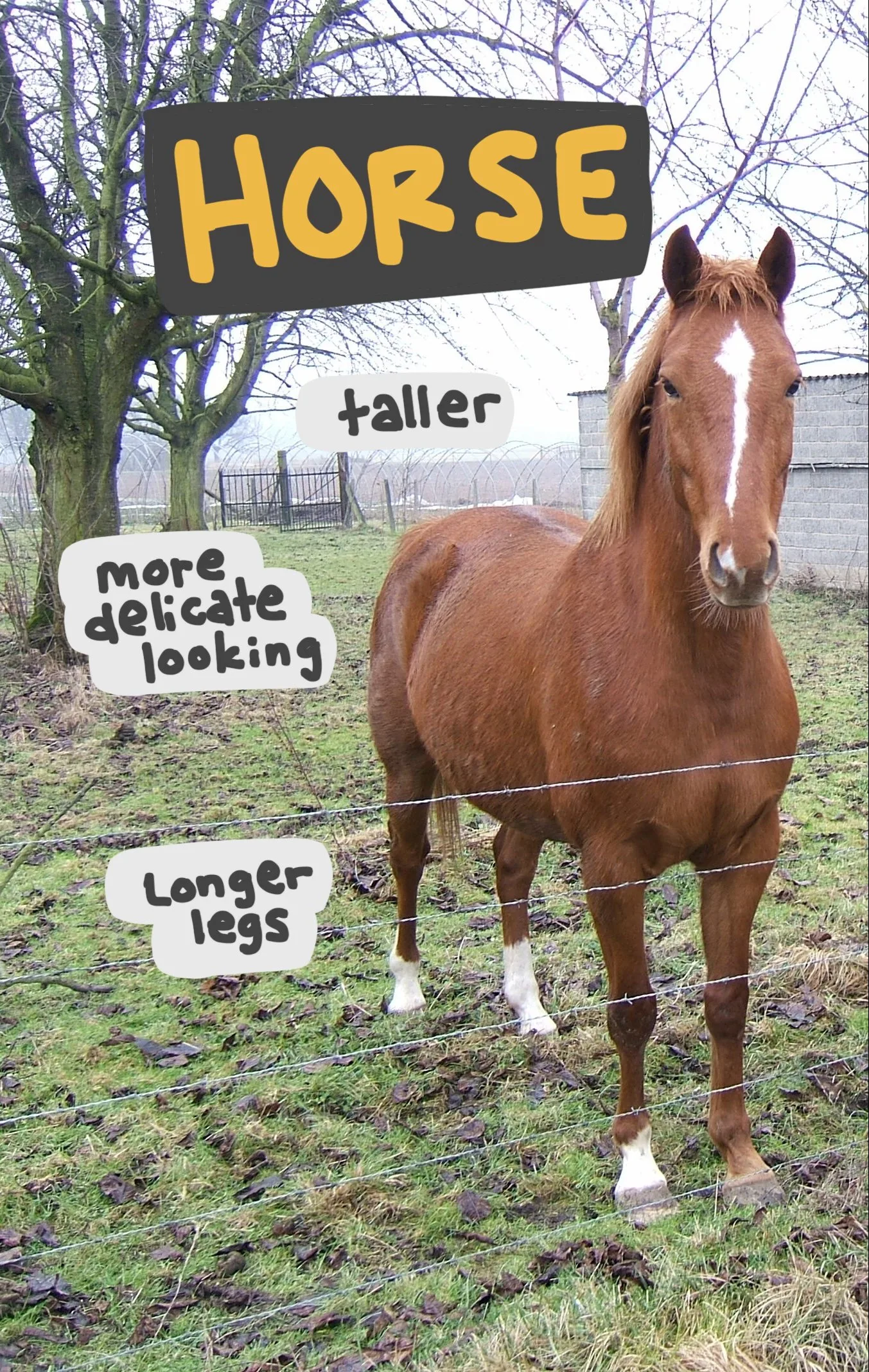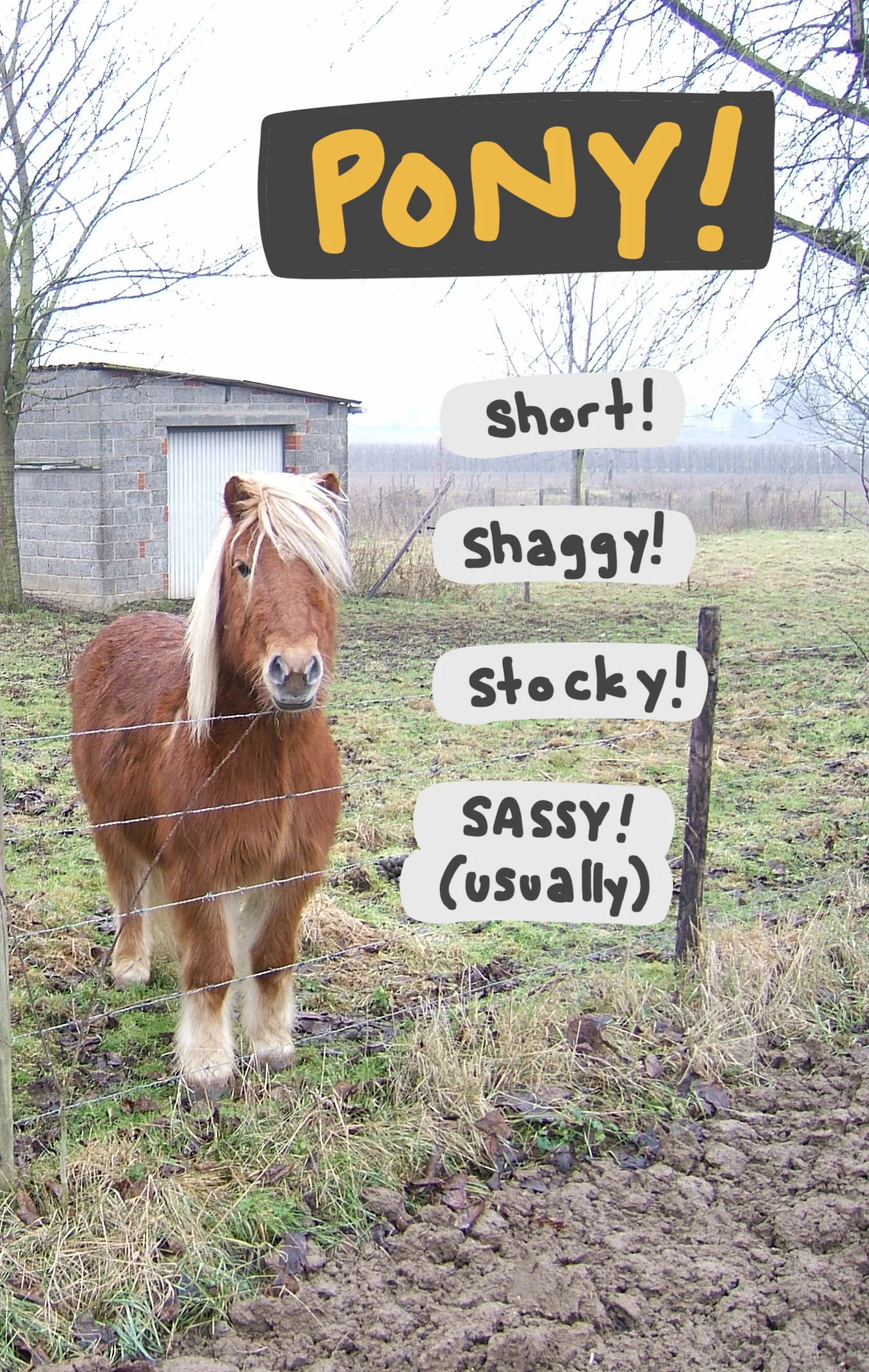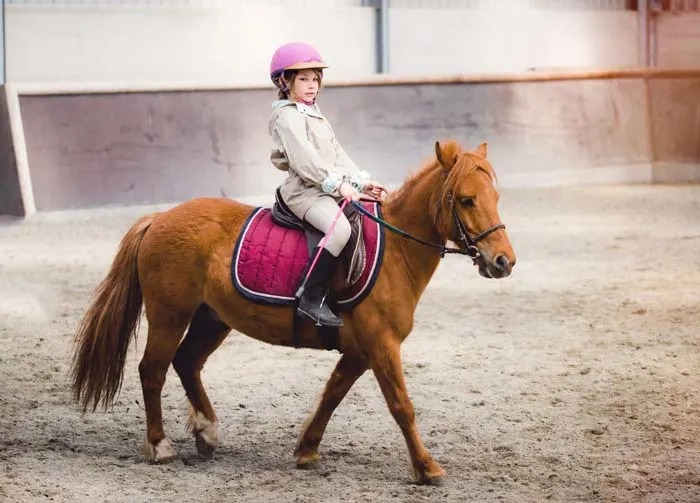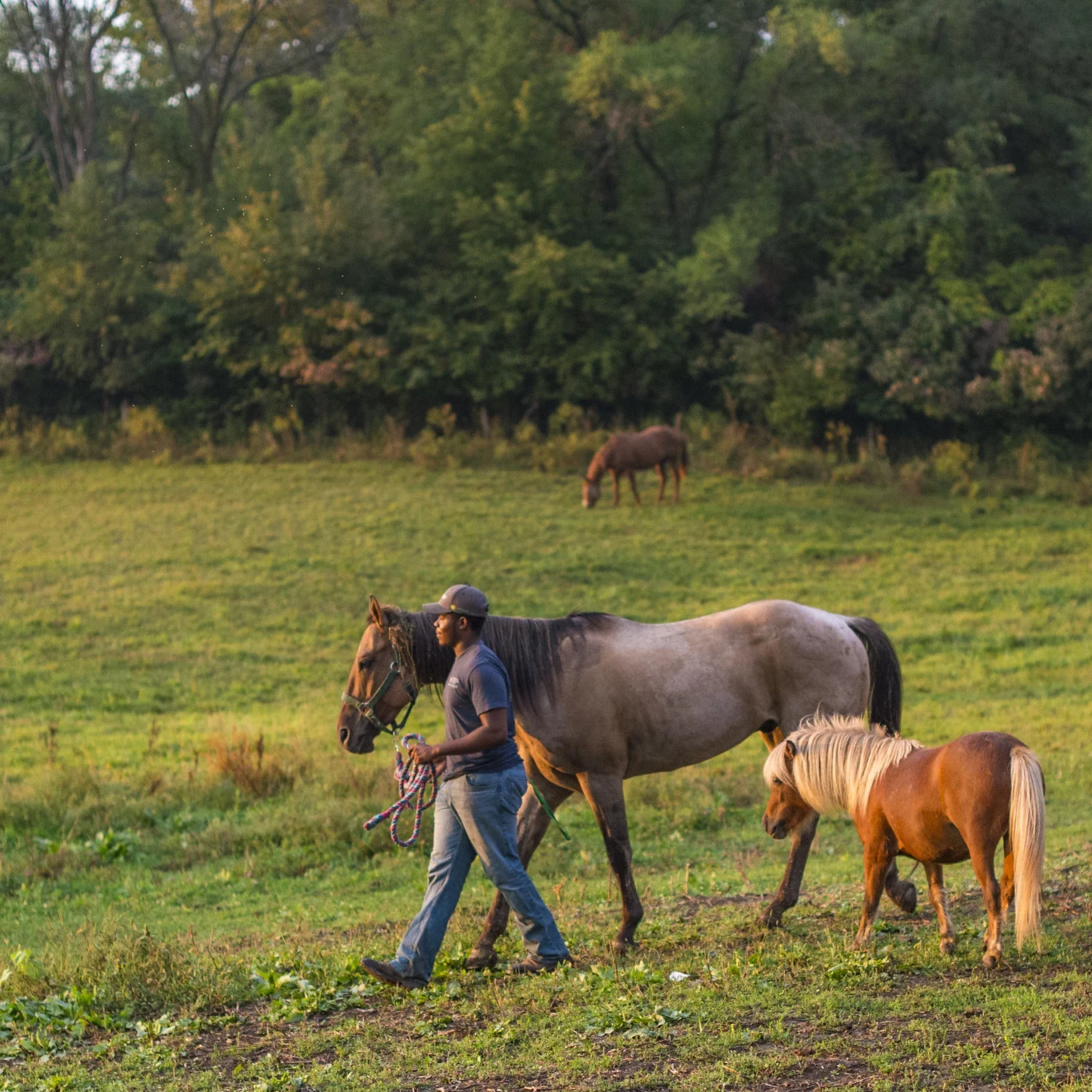A pony is a type of horse that has been bred to mature at a smaller size. Ponies, with few exceptions, are horses that measure less than 58 inches (147 cm) when measured from the ground to the bump at the top of their shoulder where their neck meets their body.
New horse riders and sometimes even equestrians have trouble telling the difference between a horse and a pony. In this article, you’ll learn tips for telling the difference between a horse and pony – plus, I’ll share from my expert knowledge about the rare situation when a pony is not, technically, a pony!


Photo by lhoon, annotate by learninghorses.com. Used with permission under (CC BY-SA 2.0)
The Easiest Way to Tell the Difference between a Horse or a Pony:
With few exceptions, the difference between a horse and a pony is height. Horse height is measured from the base of the hoof up to the top of the shoulders (where the horse’s neck meets its back in a bump called the “withers”).
When this measurement is taken, an equine that is more than 14.2 hands (that’s 58 inches) is a horse, and any equine measuring under 14.2 hands from the base of the hoof to the withers where the neck meets the horse’s back is a pony. (Wondering why horses are measured in hands? check out our article on understanding horse height.)

Other ways to tell the difference between a horse and a pony
Obviously, you won’t always have a measuring tape handy when you are around horses and ponies! Here are a few ways I’ve found to tell the difference between horses and ponies without measuring:
- Horses tend to have more refined features than ponies.
- Ponies are usually stockier than horses, with rounder bodies and shorter legs relative to body size.
- Ponies are often shaggier (Shetland breeding is very common for ponies, and shetland ponies are very fuzzy!)
- Ask the owner! For some breeds of ponies (like breeds developed to have finer features and longer legs), it can be very hard to tell! Asking the owner is the best way to know for sure.
When Ponies aren’t Ponies: 3 Exceptions to the Rule
Sometimes, ponies aren’t ponies.
I know, I know, but bear with me.
The basic rule that any horse under 58 inches (147 cm) is a pony isn’t exactly true. At least, not always. There are exceptions! Sometimes a pony is a horse!
Here’s how it works: Certain breeds of horse, are bred to be smaller. Even though they are smaller, the breed standard dictates that they’re still considered a “horse.” Just because a horse is under 14.2 hands tall doesn’t technically mean that it is a pony. For example, certain breeds like Halflinger horses are considered to be horses even if their height is under 14.2 hands high.
And the opposite can be true too: there are breeds of horses that are, by breeding and not by height, ponies. For example, Connemara, Welsh, and Shetland are common breeds of ponies. On occasion, a full-blooded pony may mature at a height of over 14.2 hands high. It would not be incorrect to refer to this “horse” as a pony, since, by breeding, it is a pony.
You can read through this post to learn more about Miniature Horses vs. Ponies.
The Difference Between a Pony and a Foal
Foal is the word for a newborn horse. A foal from two full size horses is called simply a foal. A foal from a pony mother is sometimes referred to as a pony-foal. Pony foals are smaller than typical horse foals and can even be confused with miniature horses.
How can I know a horse’s height without measuring it?
You probably don’t carry a horse measuring tape in your pocket! So, how can you know if an equine measures over or under that magical 14.2 hands-high measurement? One of the best ways to learn how to recognize and refer accurately to ponies is by acquainting yourself with a known pony. Once you have a sense of the size of a 14 to 14.2-hands-high horse in comparison to your own body, it can be easier to tell the difference between a horse and a pony by sight.
Once you know where the withers of a 14.2 hands high horse come up to on your own body, you’ll be able to quickly recognize a pony when you are standing near it.
For example, by looking at a horse’s withers and noticing if they are level with your chest, shoulders, chin, or eyeballs, you can learn to use your own body to make a pretty accurate guess about horse and pony sizes.
The Difference between Owning and Riding a Horse vs Pony
How people own and enjoy horses and ponies overlaps more than you might think. For example, although some people may think of ponies as exclusively for children’s riding and full-sized horses for adults, it’s actually a lot more complex than this!
For example, although larger riders may purchase larger horses with the expectation that a horse can carry more weight than a pony, that’s not always true. Ponies tend to have more compact builds and shorter backs – making them sometimes anatomically more suited to carrying heavier weights relative to their own size.1
Many adults enjoy riding ponies! Why?
- Ponies are easier to mount.
- Older riders may find it appealing that a fall from a pony may not be as dangerous as a fall from a horse.2
- Ponies are easier to trailer, tack up, and keep healthy during cold winters.
Similarly, some small riders and children pair well with full-sized horses. Choosing whether a horse or a pony is right for you is a very personal choice.

The Difference Between Horse and Pony Tack
Horse tack is the equipment used for horses (learn more). While the equipment used for ponies and horses is the same in form and function, it is usually not possible to use most horse equipment on ponies.
Ponies, due to their size, require special equipment that is smaller than full size tack. Most horse equipment can’t adjust small enough to fit safely on a pony’s body. Instead, you should purchase equipment specifically made for ponies. Thankfully, virtually every item of horse equipment you can imagine is manufactured and available in sizes just for ponies.
The difference between horse and pony tack isn’t just sizing, though. I can say this with certainty as someone who has owned ponies and owned a tack store for a decade! Often, products are specially re-designed to accommodate the unique conformation of ponies. Because pony breeds can vary widely in confirmation (for example, the delicate Connemara pony versus the stocky and round Shetland pony), it may take a few tries before you are able to find the right equipment for your pony.
A local tack store that does tack repair can often custom-size or modify horse and pony tack to fit your specific horse or pony’s body.
- Dyson, S., & DEO, F. (2021). How to assess the suitability of rider size–height, morphology and weight–for optimal horse welfare and performance: A review. In Proc. Amer. Assoc. Equine Pract. (Vol. 67, pp. 223-230) [↩]
- Atanasijevic, T. C., Savic, S. N., Nikolic, S. D., & Djoki, V. M. (2005). Frequency and severity of injuries in correlation with the height of fall. Journal of forensic sciences, 50(3), 608-612. [↩]
